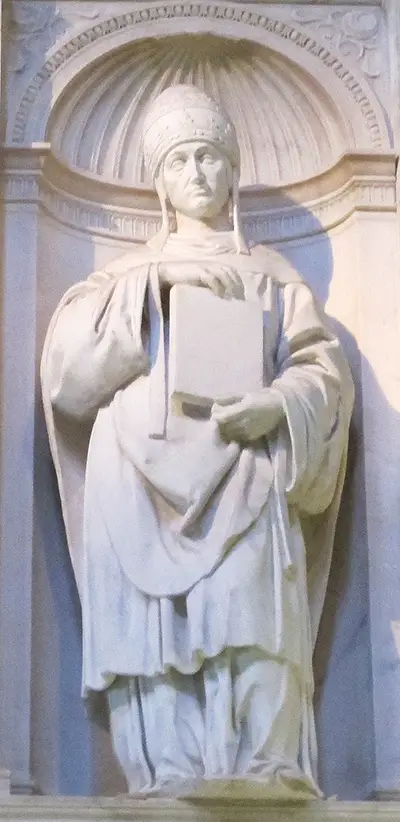St Gregory, displayed here, would be one of several figurative items produced by Michelangelo in conjunction with some of his highly skilled assistants. It would be joined by St Paul, St Peter and also St Pius, although other planned figures were never completed. The contract agreed between artist and patron was eventually annulled and the family in charge of managing the project lost interest and decided against finding another sculptor to complete this project. The altarpiece itself remains in the same location today, and has recently been refurbished in order to preserve it for future generations as well as to encourage more tourism to the popular Italian city of Siena. Many of Michelangelo's artworks were installed in various historic locations which has made it impossible to relocate them, though this has the benefit of meaning that much more of his oeuvre remains in Italy than otherwise might have been the case.
A sculptor by the name of Andrea Bregno would complete a large amount of the main altarpiece itself, but became ill and was unable to continue with the figurative work, leaving an opening for Michelangelo. He would complete a good number of the remaining items before choosing to spend his time on other projects, thus leaving the overall project incomplete, just as it remains today. Despite having a number of assistants involved in the work, we cannot understand why he would have chosen to work elsewhere and there is little evidence to confirm the circumstances of this. We do know at which point the contrast was termined, some years later, but not about why. Michelangelo did sometimes avoid finishing off projects and it may simply have been a case of not being able to cover different projects in different parts of Italy at the same point, and perhaps alternatives were more profitable or artistically interesting to him.
St Gregory was created entirely in marble, as were all of Michelangelo's other figurative sculptures for this altarpiece. Cardinal Francesco Todeschini Piccolomini who organised the entire project would eventually be buried elsewhere, and so this altarpiece's intended use as a tomb would never materialise. Once he was elected as Pope Pius III then this was inevitable, although he did not serve in that new role for long before ill health took its toll on him, just as it had on the original sculptor for the project, Andrea Bregno. It is believed that Carrara marble was used specifically for this design and it was a material in which both Bregno and Michelangelo were already well acquainted. Visitors to the Siena location today will benefit from recent renovation work which has refreshed the individual sculptures and allowed us all to appreciate better the contributions of both men.


